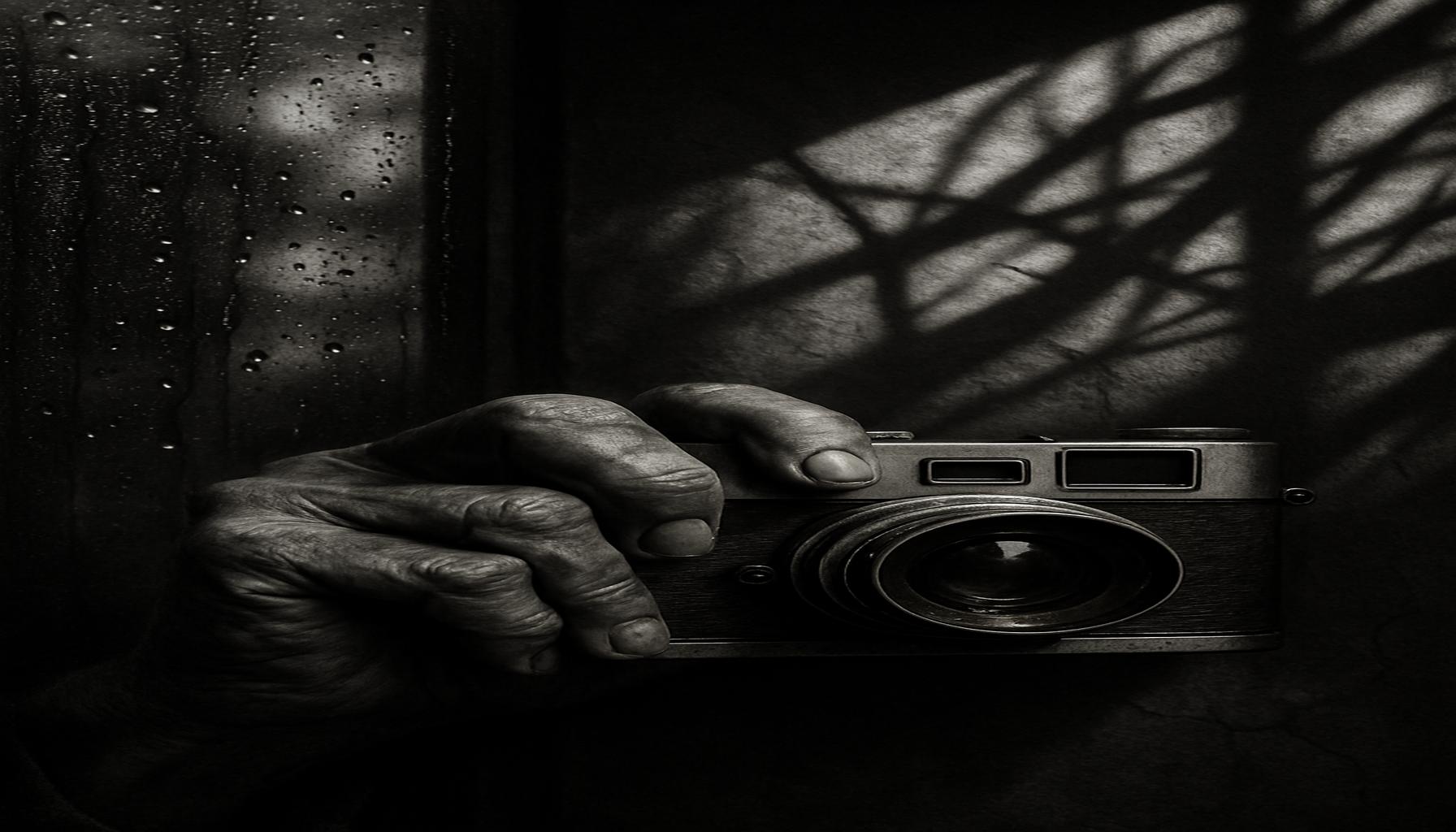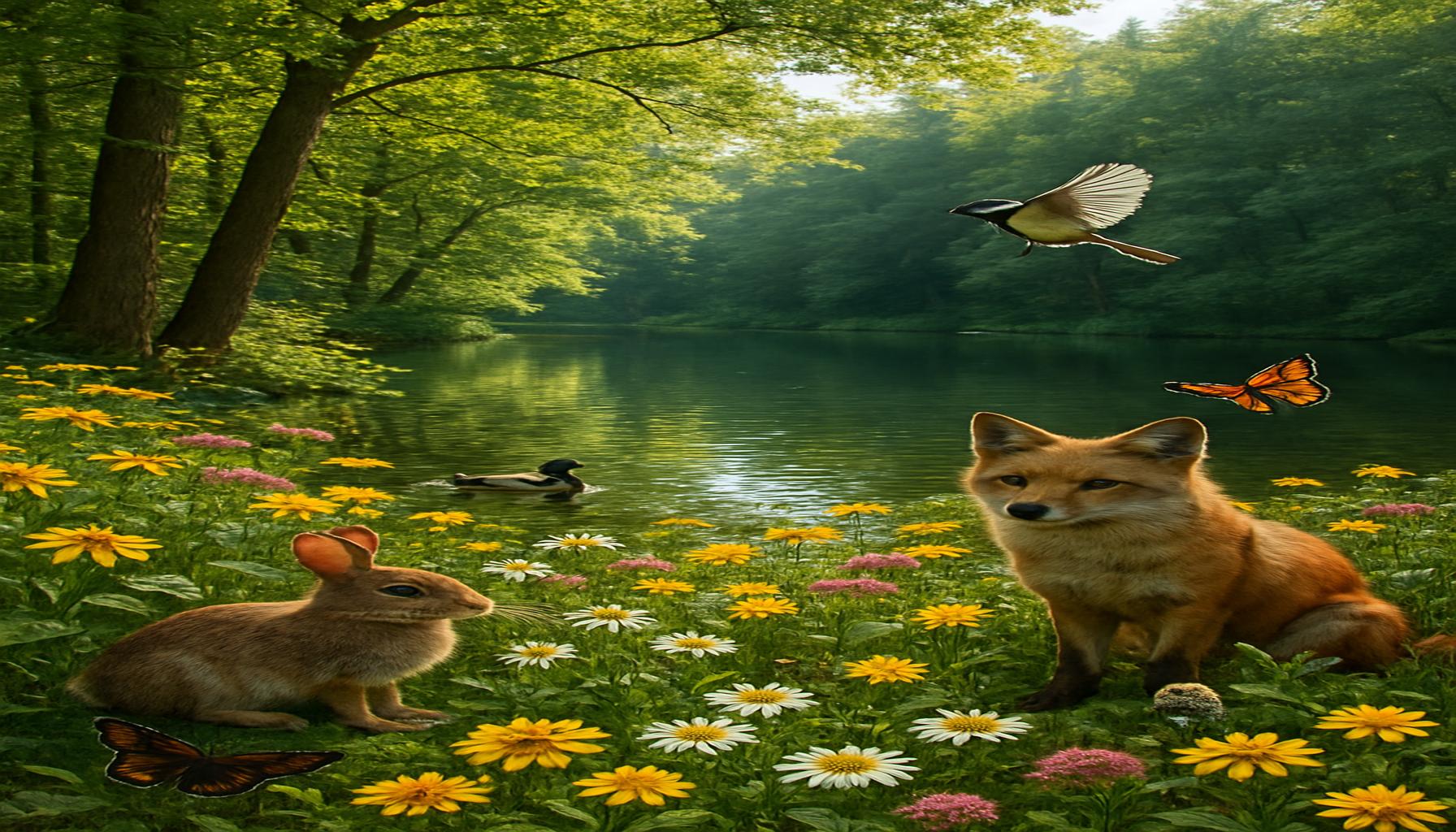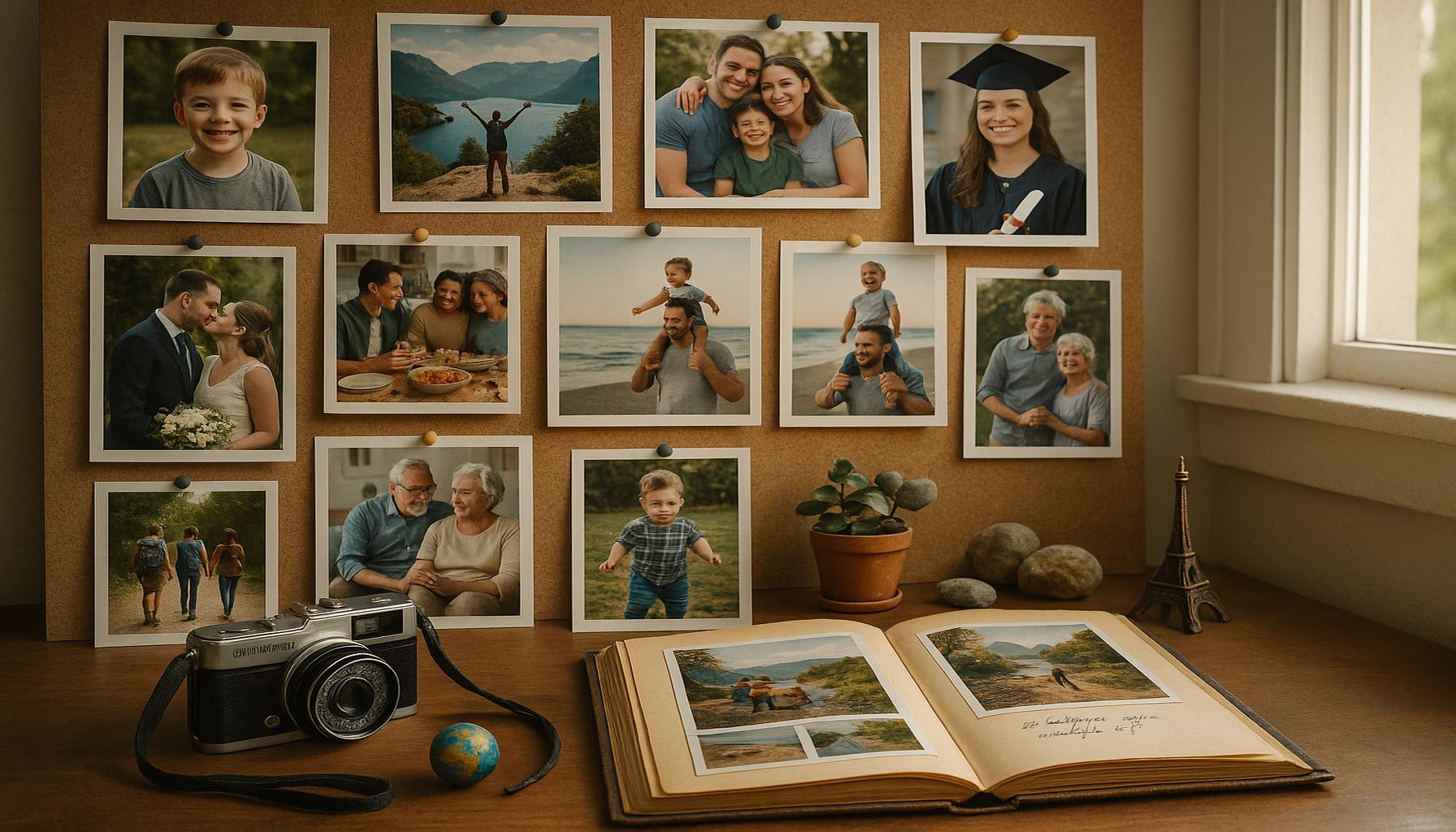The influence of photography on contemporary art: between documentary and aesthetic creation
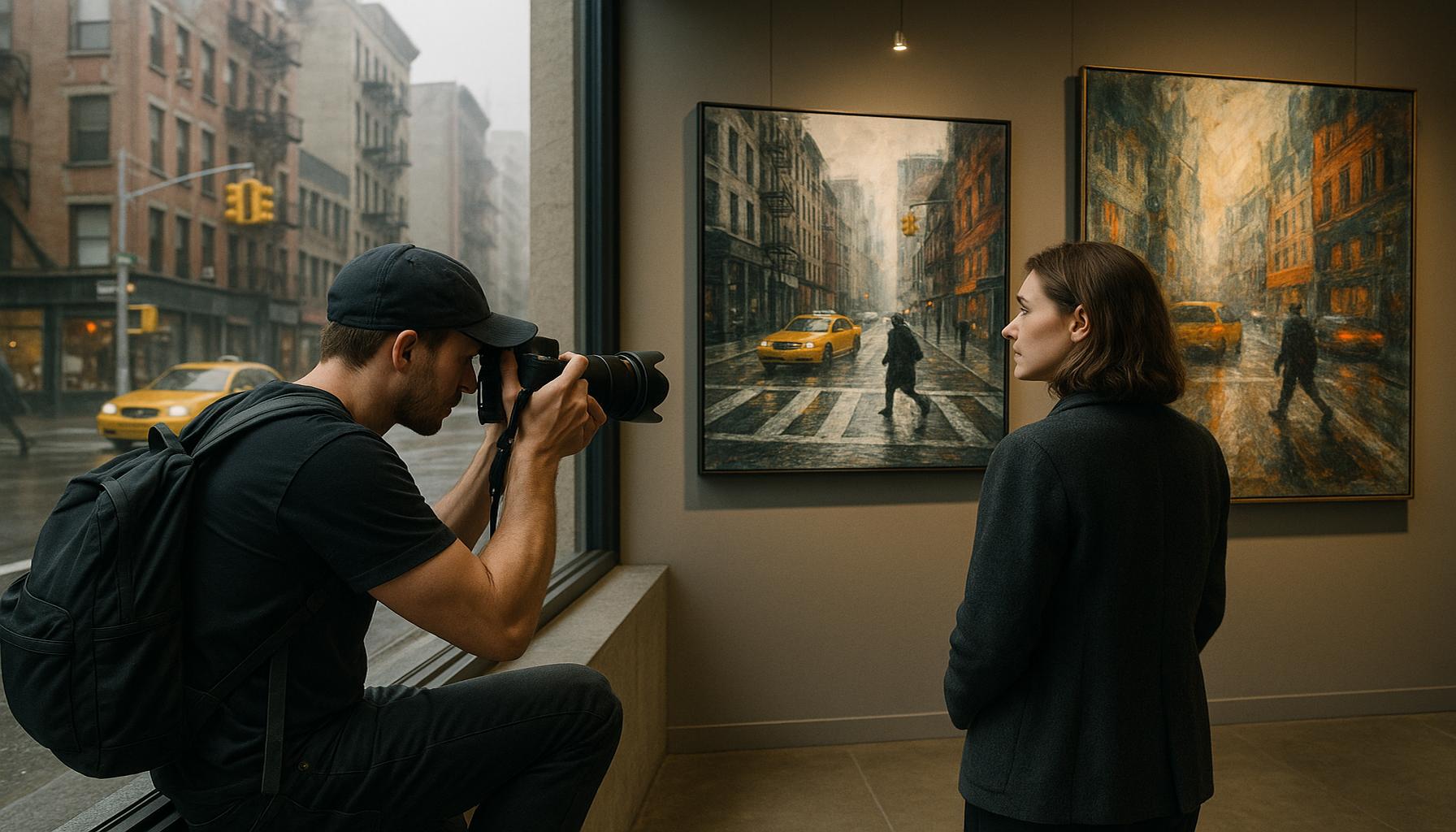
Unraveling the Influence of Photography
Photography has dramatically transformed the landscape of contemporary art, acting as a powerful tool that interweaves documentary expression with aesthetic creation. This evolving medium transcends traditional boundaries, prompting artists to confront and interrogate established notions of representation. The emergence of photography as a focal point in artistic discourse raises critical questions about the nature of authenticity, the role of the creator, and the narratives that shape our collective understanding.
One significant area where photography has made an indelible mark is in Documentary Practices. Artists are harnessing the power of this medium to shed light on pressing social issues, ranging from poverty and racial inequality to climate change. For instance, contemporary documentary photographers like Alec Soth utilize portraiture and landscape photography to explore the intricate stories behind everyday life in places often overlooked. These visual narratives not only document reality but also engage the viewer in a dialogue about the deeper societal constructs that shape human experiences.
In the realm of Aesthetic Exploration, photography transcends mere documentation to become an intricate art form in its own right. Artists manipulate light, shadow, composition, and color to create images that evoke a visceral emotional response. Take, for example, the work of Gregory Crewdson, whose elaborately staged photographs resemble cinematic scenes, blurring the lines between reality and fantasy. His compositions invite viewers to ponder the unease lurking beneath the surface of suburban life, arousing curiosity and introspection.
Moreover, the rise of Conceptual Frameworks has revolutionized the boundaries of photography through innovative practices, including digital manipulation and installation art. Artists like Jeff Wall and Douglas Gordon have harnessed technology to create immersive environments that challenge traditional perspectives on photography. Their work not only questions the authenticity of photographic representation but also prompts audiences to reconsider their consumption of visual culture.
In the United States, the impact of photography is especially profound, as evidenced by movements such as Social Documentary Photography. Pioneers like Dorothea Lange used photography during the Great Depression to capture the plight of American families, making the invisible visible through her poignant imagery. Similarly, contemporary artists such as Cindy Sherman challenge conventional notions of identity by using self-portraiture to explore themes of performance and the construction of self in the visual realm.
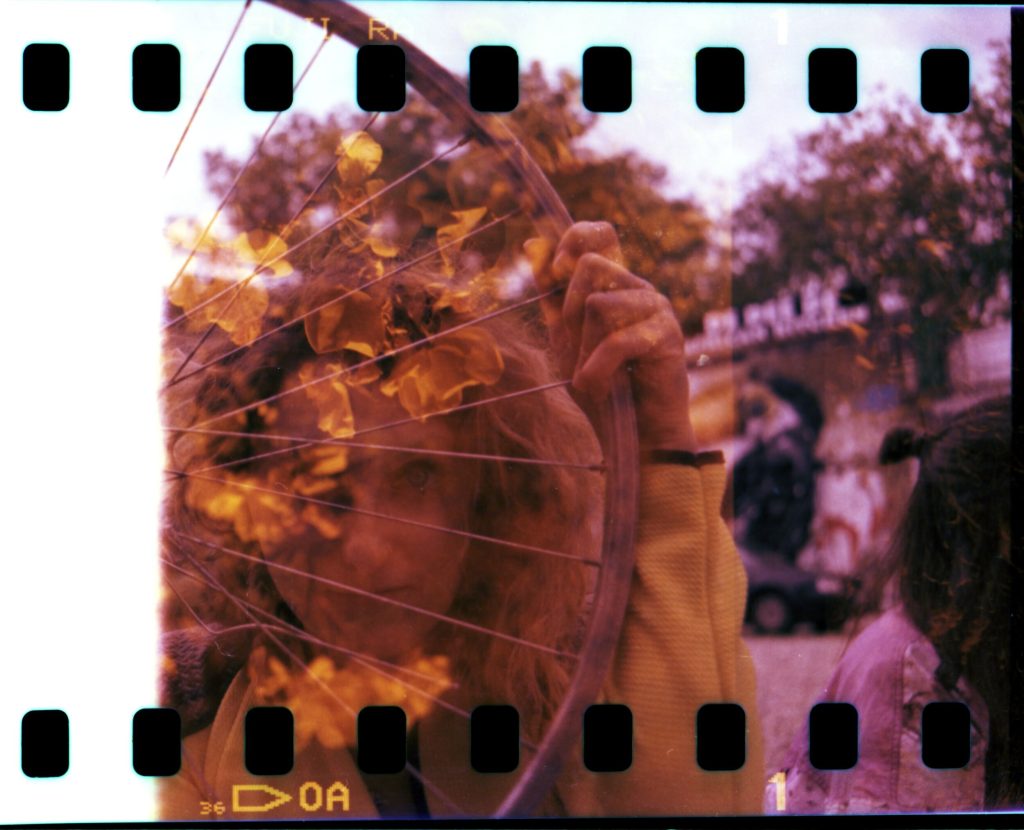
This article aims to delve deeper into the intricate dynamics that photography instills within contemporary art, examining its dual role as both a tool for capturing reality and a medium for provoking thought. By closely analyzing these themes, readers will uncover a rich tapestry of documentary intent and artistic creativity, revealing the profound interplay that shapes today’s visual landscape. As the dialogue continues to evolve, the question arises: how will photography further redefine our understanding of art and society in the future?
DIVE DEEPER: Click here to discover the art of sustainable crafting
Documentary Practices: A Lens on Reality
In the evolving narrative of contemporary art, documentary photography stands out as a pivotal practice that grants audiences an unfiltered glimpse into society. This particular facet of photography bridges the gap between capturing reality and invoking empathy, making it a formidable medium for artists who aim to communicate profound truths. By employing photography to document social issues, artists are not just observers; they actively contribute to the discourse surrounding crucial themes that plague modern society.
Renowned documentary photographers often maneuver through the complex dynamics of light and shadow to encapsulate moments that elicit emotional responses. Some notable practitioners in this field include:
- James Nachtwey, whose harrowing images from conflict zones illuminate the human condition amid war and disaster.
- Dorothea Lange, whose iconic work during the Great Depression showcased the struggles of displaced families, has left an indelible mark on American visual culture.
- Rineke Dijkstra, celebrated for her poignant portraits that explore the transitional phases of adolescence through a documentary lens.
These artists, among many others, effectively utilize their camera as a medium to not simply present the world as it is, but to challenge perceptions and incite reflection. Through their lens, viewers are encouraged to grapple with uncomfortable truths, fostering a deeper understanding of societal conditions and individual experiences.
Aesthetic Exploration: The Artistic Dimension
Contrarily, the aesthetic exploration of photography showcases its potential as an art form in its own right, transcending the traditional boundaries of documentation. Here, artists embrace experimentation, manipulating visuals to craft compelling narratives that prioritize emotion and form over mere factual representation. This artistic license allows for the creation of works that invite audiences into a dream-like space, where the lines between reality and imagination blur.
Consider the work of Sandy Skoglund, whose staged photographs transform mundane settings into surreal scenes, merging the familiar with the fantastical. Her vibrant, elaborate compositions not only attract the eye but also provoke thought about the interplay of environment and human behavior. Similarly, Thomas Struth combines art historical reference with contemporary imagery, prompting viewers to think critically about cultural heritage and collective memory.
The aesthetic exploration inherent in contemporary photography highlights an ongoing dialogue regarding authorship and the role of the viewer. Questions arise: Are these images reflections of reality, or are they artifice? How do such manipulations impact our perception of truth in visual media? Ultimately, these inquiries reveal the intricate processes through which photography can serve both as a medium for social commentary and a platform for avant-garde artistic expression.
As the realms of documentary and aesthetic practice continue to intersect, the transformative power of photography remains evident. This dynamism not only fuels the artistic community but also shapes the broader cultural landscape, encouraging an ongoing conversation about representation, authenticity, and the very essence of art itself.
The Role of Photography in Artistic Expression
Photography has dramatically reshaped the landscape of contemporary art, blurring the lines between documentary and aesthetic creation. Artists today utilize photography not merely as a medium but as a **critical tool** for exploring complex themes. While traditional photography captures the essence of reality, contemporary approaches often manipulate images to convey deeper meanings, prompting viewers to question the truthfulness of visual representations.The fusion of photography with mixed media has seen a rise in **interactive installations** where viewers engage with the artworks, fostering a more dynamic relationship with the art. This engagement allows artists to explore issues such as identity, culture, and social commentary, thus creating a conversation between the subject and the observer.Moreover, many photographers take on the role of **storytellers**, crafting narratives that may reflect personal experiences or broader societal issues. This trend challenges the viewer to interpret not just the aesthetics of the image but also the underlying messages conveyed through the photographer’s perspective. As a result, photography serves as a **subversive agent** in contemporary art, encouraging critical thought and reflection.In understanding this intricate relationship, it is essential to recognize how photography can dismantle preconceived notions of beauty and authenticity in art. Artists frequently transform ordinary moments into extraordinary visual statements, reinforcing photography’s dual role: as both a document of reality and a catalyst for creative expression.As viewers venture deeper into the realm of photography as contemporary art, they might discover innovative practices such as **documentary photography** that uphold aesthetic beauty or conceptual pieces that challenge traditional ideals. This interplay enriches the art world, making it a pulsating arena for discussion and reinterpretation. With every click of the shutter, photographers continue to push boundaries, inviting audiences into an intricate dance between documentary truth and aesthetic innovation.
| Advantages | Key Features |
|---|---|
| Enhanced Accessibility | Photography provides a bridge for artists to share their work with a broader audience through both physical and digital platforms. |
| Emotional Engagement | Powerful imagery can evoke strong feelings and provoke critical thinking, encouraging a dialogue about the narratives behind photographs. |
As the conversation around photography in contemporary art continues to evolve, viewers can expect to see exciting developments that further challenge the boundaries between reality and representation.
DIVE DEEPER: Click here to explore sustainable beauty techniques
Intersections of Truth: The Blurred Lines of Representation
As contemporary photography continues to evolve, it presents a complex interplay between truth and imagination, shedding light on the ways in which artists navigate the shifting paradigms of representation. This duality prompts an essential inquiry into how photography maintains its role as a tool for honest storytelling while simultaneously participating in the realm of abstract and conceptual art. The very practice of photography invites viewers to interrogate not just what they see, but how they interpret images within various contexts.
One significant aspect of this dialogue involves the recontextualization of images. Artists often repurpose existing photographs to craft new narratives that challenge established notions of reality. A prime example is the work of Hannah Höch, a pioneer of photomontage, who fused different photographs to create politically charged commentary during the early twentieth century. Her revolutionary techniques paved the way for current artists like David Hockney, who utilizes multiple images to produce striking compositions that examine perspectives and visual storytelling.
This intersection of styles also gives rise to powerful critiques of contemporary culture. Artists like Andreas Gursky, with his grand-scale photographs of everyday life, epitomize the fusion of documentary precision and aesthetic appeal. By depicting hyper-real interpretations of ordinary spaces, Gursky prompts viewers to ponder consumerism and globalization, emphasizing how aesthetics can enrich documentary content. His work serves as a reminder that photography possesses the ability not only to document but also to transform and elevate mundane occurrences into art.
Digital Artistry: New Horizons in Photography
The advent of digital technology has further revolutionized the landscape of contemporary photography. With the accessibility of advanced editing software, artists are empowered to manipulate images in unprecedented ways. This digital revolution challenges the traditional concept of the photograph as an untouched representation of reality. Artists like Manuel Mathieu explore this terrain by layering multiple digital manipulations, ultimately crafting a visual language that questions our understanding of authenticity.
The democratization of photography through social media platforms also plays a pivotal role in reshaping audience engagement. With the click of a button, anyone can share their visual narratives, blurring the distinctions between professional photographers and amateur creators. The hashtag movement further enables the convergence of diverse perspectives on social issues such as identity, race, and gender, creating a rich tapestry of commentary that overlays the documentary with the artistic.
Additionally, contemporary exhibitions, such as those curated by the International Center of Photography in New York, highlight the significance of photography in artistic conversation. These exhibitions often juxtapose documentary pieces with abstract works, inviting viewers to engage with the medium holistically. They illustrate how photography, regardless of its approach, plays an instrumental role in reframing societal issues and artistic exploration.
In this complex web of representation, artists, curators, and audiences alike partake in an ongoing dialogue about the nuances of truth. The evolving practices of photography propel conversations regarding our perception of reality, continuously challenging the boundaries between documentary and aesthetic creation. As these two realms intersect and inform one another, the influence of photography on contemporary art remains expansive and illuminating, beckoning us to look deeper into the art that surrounds us.
DISCOVER MORE: Click here to dive deeper
Conclusion: Photography’s Dual Role in Contemporary Art
In summation, the current landscape of contemporary art demonstrates that the influence of photography operates at the intersection of documentary and aesthetic creation, offering both artists and viewers a rich tapestry of meanings and interpretations. As we have explored, photography transcends its traditional role as a mere documenter of reality, evolving into a dynamic medium that challenges our perceptions and evokes emotional responses.
Artists today skillfully navigate this duality, blending factual storytelling with imaginative expression to construct complex narratives that engage with pressing societal issues. The examples of pioneers like Hannah Höch and contemporary visionaries such as Andreas Gursky and Manuel Mathieu illustrate how the medium can be employed as a platform for critique and reflection, exploring themes of identity, consumerism, and cultural globalization.
Moreover, the digital revolution and the rise of social media have democratized photography, allowing a broader range of voices to participate in this ongoing conversation. The confluence of diverse perspectives invites audiences to actively engage with imagery, fostering a deeper understanding of the intricate relationship between art and life. As exhibitions around the world continue to highlight the multifaceted nature of photography, viewers are encouraged to explore the profound implications of these visual narratives.
As we move forward, the question remains: how will photography continue to reshape our understanding of art and reality? This inquiry is not merely academic; it is a call to dissect and appreciate the complexity of the images that surround us. The evolving influence of photography in contemporary art signifies that as we look through the lens, we are not only observing the world but also participating in an ongoing dialogue about our collective experience.
